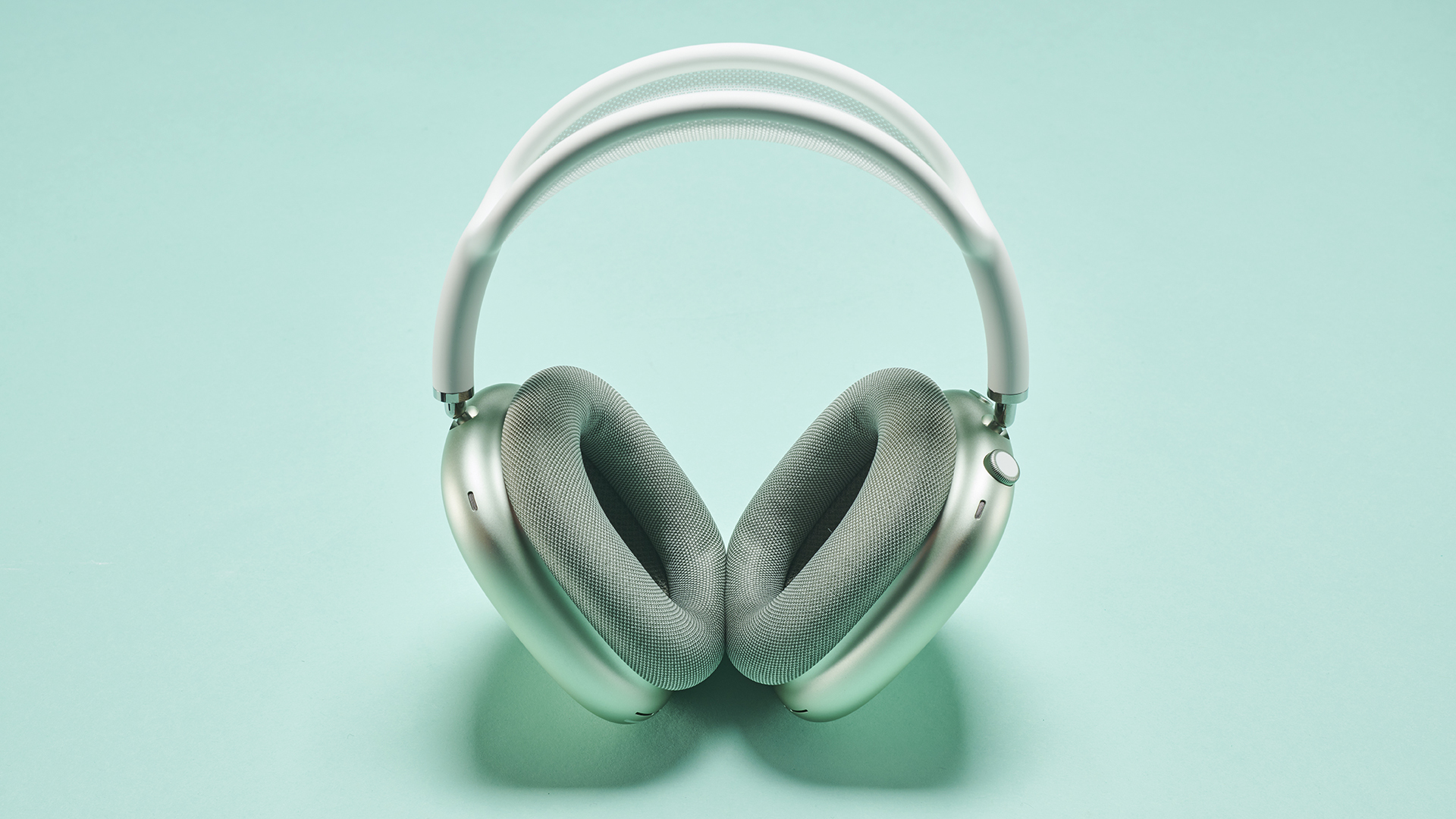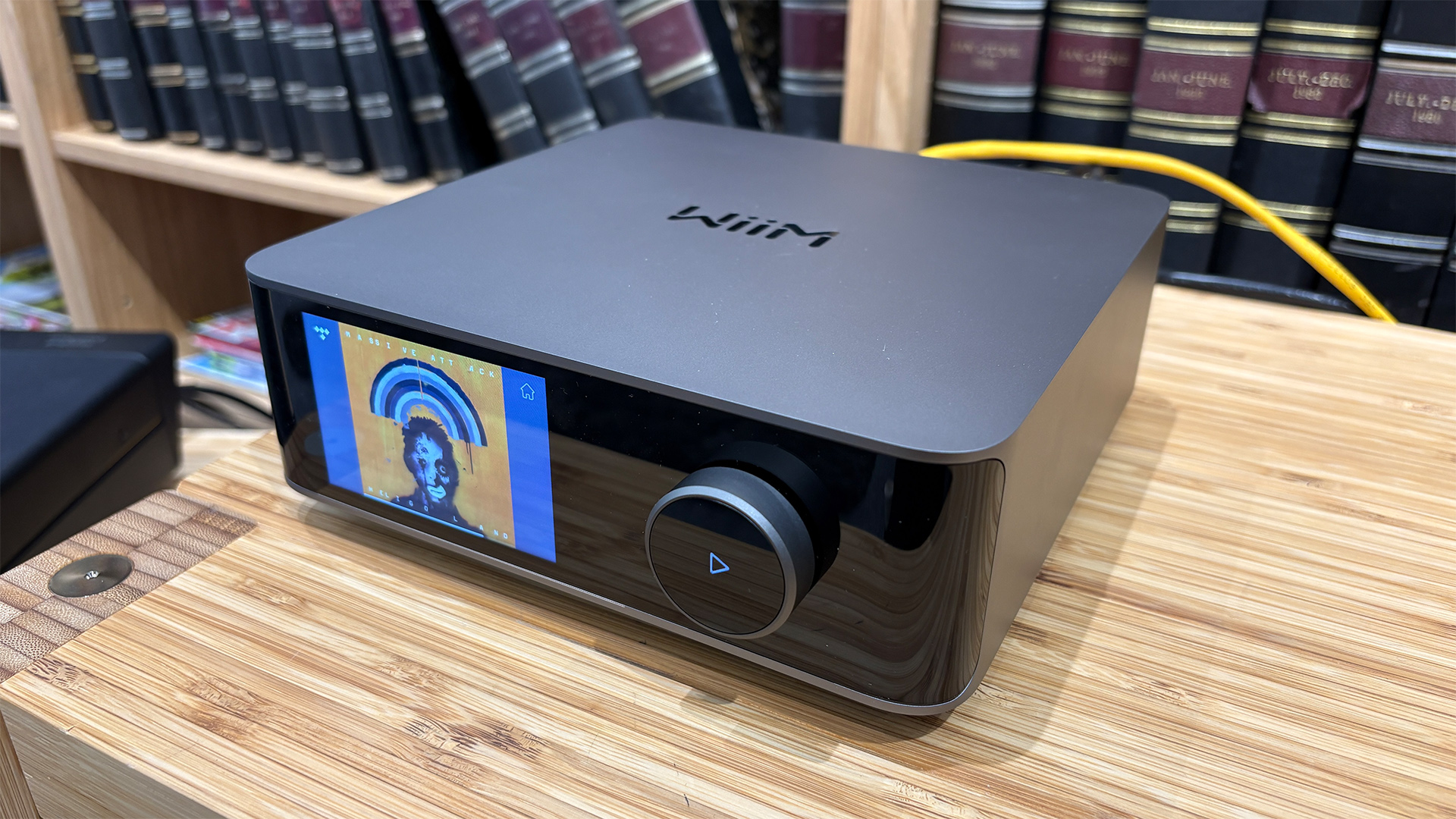Always wanted a Dolby Atmos speaker system but never had the space? Buy the AirPods Max headphones
A truly cinematic sound experience without any speakers

If you're a movie enthusiast, you've almost certainly always dreamed of having a 'proper' speaker system at home, and these days that means a Dolby Atmos speaker system. Buying one not only costs a lot of money, though, it also requires lots of space, a million miles of cabling and a fair bit of patience and understanding from the rest of the family.
Even an entry-level 5.1.2 Dolby Atmos system requires that you buy, place and wire-up seven speakers and a AV amp. Go the whole-hog with a 7.1.4 system and the speaker count goes up to eleven and, in many cases, the AV amp will need to be supplemented by extra amplification. Let's be honest; the number of people willing and/or able to go to those sorts of lengths is depressingly small.
You could go down the Dolby Atmos soundbar route, of course, and it's fair to say that there are now a number of excellent examples out there, such as the Sonos Arc, of which I'm a big fan. But, good while those are, they're reliant on virtualisation that's never quite as effective as the real thing, even if you've got the ideal room for the sound to be accurately bounced around.
There are other solutions, too, such as the very impressive Sony HT-A9, which combines a small processor with four wireless, twin-driver speakers that produce a convincing Dolby Atmos soundscape while being very flexibly over positioning. My instinct, though, is that while that halfway-house approach will work for some, it will still be too many speakers for many.
The good news is that there's an extremely impressive solution: the AirPods Max headphones. Yes, I'm serious.

While the AirPods Max are rightfully regarded as being among the very best wireless headphones you can buy for music, many people are unaware of the movie magic that's also at their disposal.
I think that's likely because, to most people, the term 'Spatial Audio', which is the clever tech at the core of Apple's latest AirPods, has quickly come to mean head-tracking and/or three-dimensional music. Truth be told, though, while each of these elements is impressive in its own right, I could personally do without either. To me, the killer aspect of Spatial Audio is its ability to convincingly recreate Dolby Atmos movie sound through headphones.
The latest hi-fi, home cinema and tech news, reviews, buying advice and deals, direct to your inbox.
Before you say it: yes, I know there have been products that deliver surround sound and/or Atmos via headphones before. I've personally tested a bunch of them and, the thing is, they're not very good. The AirPods Max, though? They're great.
If you have the opportunity and willingness to be convinced, give Gravity a go. The opening scene is famous in AV circles for the way it places radio chatter in precise, distinct positions in 3D space (and because the Dolby Atmos version of the soundtrack has been bizarrely omitted from most disc releases of the film). It's stunningly effective, with voices coming from all round you, and it's predictably impossible for a stereo setup to recreate. Dolby Atmos soundbars struggle, too, as they tend to convincingly stretch into the room only part of the way and/or lack the precision of a system consisting of discrete speakers that are dotted around the listening position.
The AirPods Max get amazingly close to rivalling a proper Dolby Atmos speaker system, though. Effects that are placed directly in front of the listening position are a touch less focused than they are from a dedicated centre channel, but there's a spaciousness, seamlessness and precision to the delivery that's genuinely remarkable. Whatever space you're in is replaced by a three-dimensional soundscape into which effects are placed. The radio chatter is positioned just where it should be, not just in terms of direction but also distance.
The Dolby Atmos-ness of the delivery is of course the most instantly impressive aspect of the AirPods Max movie sound, but it would be wasted were it not for their many other qualities, most notably their bass weight and depth, excellent dynamics and superb detail.
To go with the AirPods Max, you'll of course need a source but, assuming you've already got a TV, that need only be an Apple TV 4K. The 2021 model costs a very reasonable £169 / $179 / AU$249, and while the AirPods Max are expensive by headphones standards, at £549 / $549 / AU$899 a pair, the combined cost of both items is still vastly lower than what you'd expect to pay for even an entry-level Atmos amp and speaker system.
Those who'd prefer a truly personal cinema system should consider using an iPad as their source – most models from the last few years are compatible (you can see the full list here), and for picture quality they'll beat many TVs, size notwithstanding.
It's worth noting that the Spatial Audio delivery differs a bit between the Apple TV 4K and an iPad, and that's intentional – the iPad's smaller screen is married to a closer, more intense soundscape, while the Apple TV 4K's version is airier and more spacious. Each is great in its own way.
It's also true that the AirPods 3 and AirPods Pro both support Spatial Audio, too, and both do so well. That said, the in-ear design makes for a less wholly convincing and spacious delivery, and neither offers the cinematically hefty bottom end of the AirPods Max.
In terms of what there is to watch, you're really spoiled for choice. Most Apple TV+ content has Dolby Atmos sound, of course, but so do many of the movies in Apple's iTunes/TV store. That's where you should head if you're looking for the latest blockbuster (and also where you'll find the Dolby Atmos version of Gravity).
The Netflix app on iPad and Apple TV will pass Atmos to a pair of AirPods, too, as will the Amazon Prime Video app on Apple TV (but not iPad). Somewhat disappointingly, the Disney+ app, which ordinarily carries lots of Dolby Atmos content, appears to only support 5.1 via AirPods. These 5.1 soundtracks are still 'spatialised', though, giving you a convincing surround sound experience. The stereo sound of most other apps can be given the spatial treatment, too, but these sound less authentic. Spatial Audio on for Dolby Atmos and 5.1, off for stereo – that's my mantra.

Now look, I realise that a pair of headphones is going to have limitations, most notably that only one person can listen to them at once (Apple's Share Play feature allows for two pairs of AirPods to be connected to one device, but Spatial Audio is then disabled). But, hand on heart, do the people you live with actually share your passion for high-quality Dolby Atmos sound?
If they do, it should be possible to convince them that it's well worth filling your lounge with speakers. If they don't, I wholeheartedly recommend buying a pair of AirPods Max headphones and an Apple TV 4K or an iPad. Collective TV- and movie-watching will have to be accompanied by whatever speakers are in or connected to your TV, but when everyone else goes to bed you can treat yourself to a truly cinematic experience – and without any risk of awakening the sleeping non-believers.
Heck, I'm one of those people lucky enough to have a dedicated 7.1.4 setup at home and I still regularly watch films using Spatial Audio via the AirPods Max, particularly late at night. Loud Dolby Atmos in headphones is vastly better than very quiet Dolby Atmos via speakers.
MORE:
Give the AirPods Max a workout with the best Dolby Atmos movie scenes
If you're going portable, the iPad Pro 12.9 is like an OLED TV you can take anywhere
Tom Parsons has been writing about TV, AV and hi-fi products (not to mention plenty of other 'gadgets' and even cars) for over 15 years. He began his career as What Hi-Fi?'s Staff Writer and is now the TV and AV Editor. In between, he worked as Reviews Editor and then Deputy Editor at Stuff, and over the years has had his work featured in publications such as T3, The Telegraph and Louder. He's also appeared on BBC News, BBC World Service, BBC Radio 4 and Sky Swipe. In his spare time Tom is a runner and gamer.

